Rooting mushrooms (Hymenopellis spp) are tall, stately fungi that rise up from the forest floor. They are hard to miss, that’s for sure! There are several rooting mushroom species in North America. They can be complicated to differentiate but they’re all related so it’s nice to at least know the family. Rooting mushrooms are edible, but they aren’t widely foraged because there isn’t much to them and the taste isn’t all that special.
- Scientific Name: Hymenopellis spp
- Common Names: Beech Rooter, Rooting Shank, Deep Root Mushroom, Rooted Collybia, Rooted Agaric
- Habitat: Decaying wood, especially stumps
- Edibility: Edible, but not choice
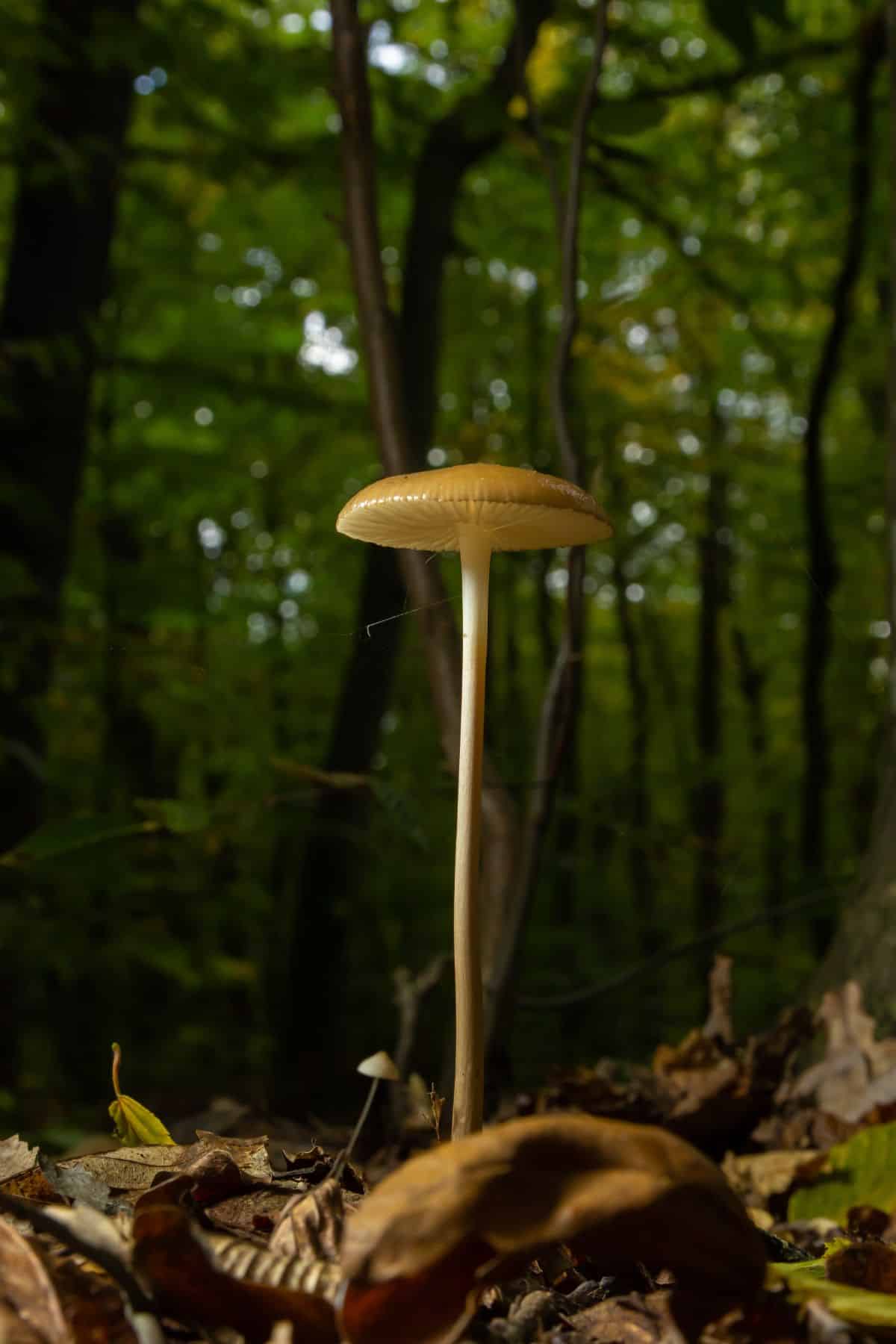
Jump to:
All About Rooting Mushrooms; The Tall Forest Fungi
The rooting mushrooms have set their roots (pun intended!) in the fungi kingdom. Up until a few years ago, the primary rooting mushroom species in North America was thought to be Hymenopellis radicata; this, however, is a European species and does not occur in North America. Instead of H. radicata, we have 8 Hymenopellis rooting mushroom species. Many are quite complicated to differentiate, so simply knowing they are Hymenopellis is often as far as we get.
In older identification guides, it’s common to see the species name H. radicata applied to all the rooting mushrooms.
These fungi, along with two other species not in this family, yet, (Caulorhiza umbonata and Paraxerula americana) are known as Xeruloid mushrooms. They are part of the Xerula family; mushroom species with tall, slender features, white spore prints, and long rooting stems. They have no volvas (cups around their stem base) or stem rings.
The rooting mushrooms of North America are most often found around dead trees, old rotting stumps, and in places where trees have been removed. They love the decaying organic material.
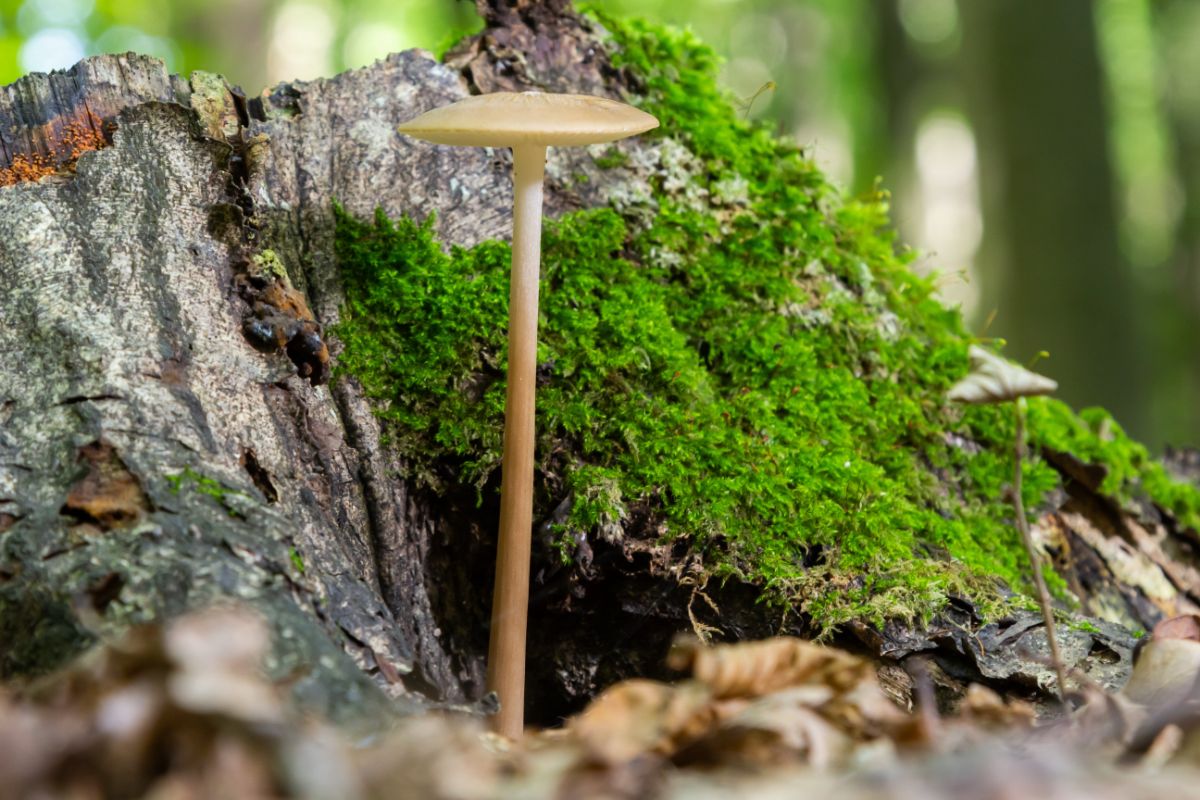
Rooting Mushrooms Identification Guide
This is a general guide for identifying this family of fungi. For more detailed notes about each species, see the following section where the 4 most common North American species are further described.
Season
Late spring through fall, predominantly east of the Rocky Mountains for all species.
Habitat
Rooting mushrooms are saprobes, meaning they feed on dead or decaying organic matter. They usually grow alone or in groups around deciduous stumps and trees or from buried wood. You’ll commonly find them attached to buried deadwood near stumps. This makes it look as though they’re growing from the ground, but they are not — there is buried wood there for sure.
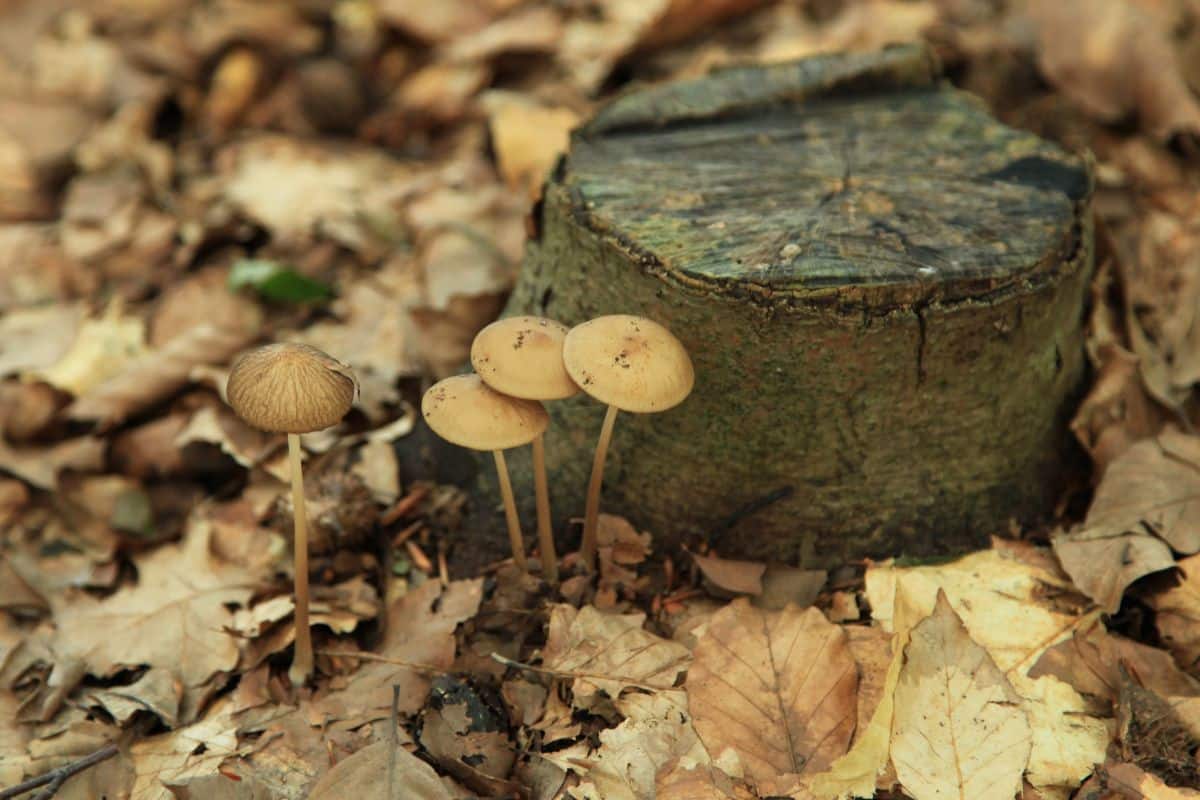
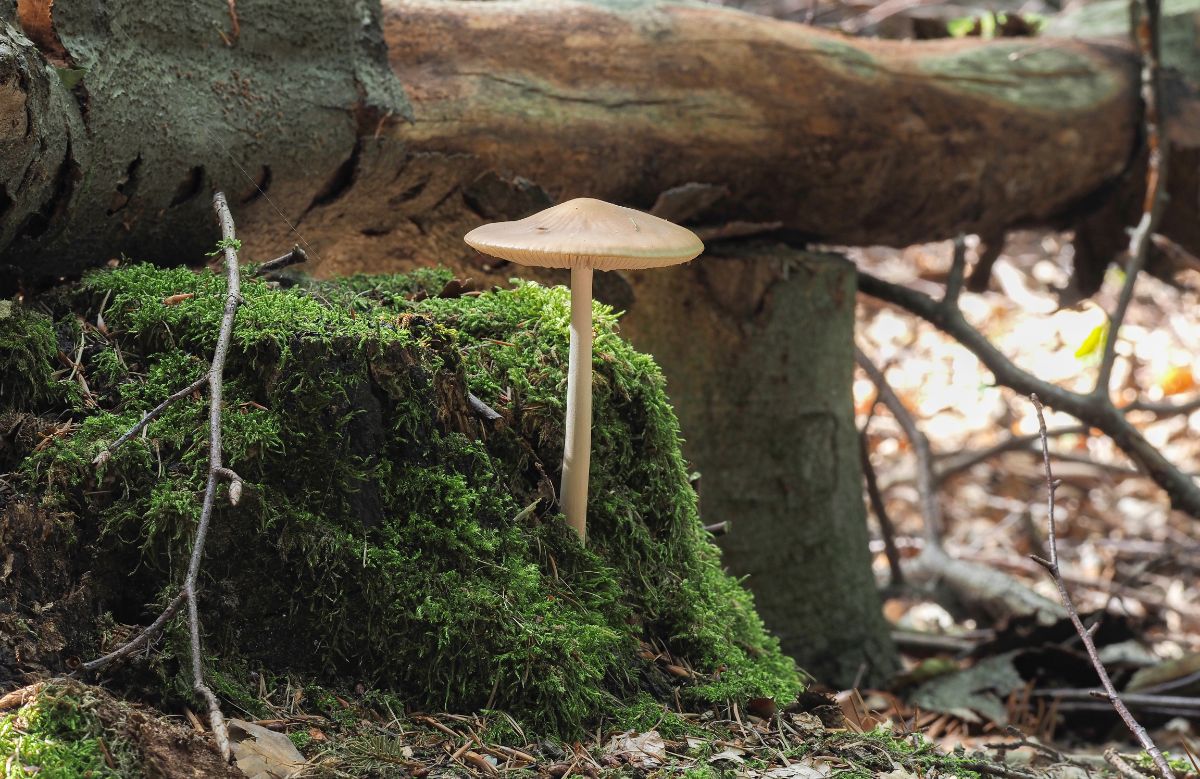
Identification
Cap
The caps of rooting mushrooms start out bell-shaped, then mature to broadly bell-shaped or flat like a dinner plate. The cap is bald (no decorations). They have wrinkles or puckered skin radiating out from the center. When the mushrooms are young, the wrinkles are usually just around the center of the cap; with age, the entire cap often turns wrinkled.
Their color ranges from dark brown tan to grayish or yellow-brown, which may fade to brownish or buff over time. Their color is usually pretty bland and varies widely, even among the same species.
Gills
The gills of these species are white to creamy, thick, and closely packed to distant, depending on the species. Rooting mushrooms have lots of short gills, too, which don’t attach to the stem. The long gills are broadly attached to the stem and often notched at the point of attachment. This results in a tiny tooth that runs down the stem.
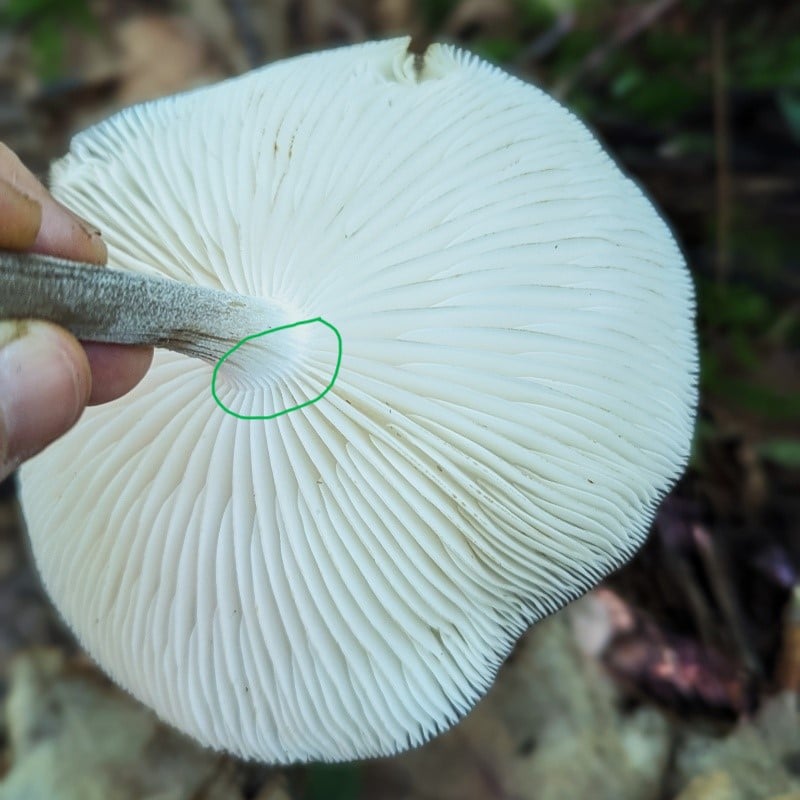
Stem
The stems measure between 1.6 and 6.3 inches long above the ground, depending on the species. They are brownish to whitish to grayish. Rooting mushroom stems are thin and slender; a long skinny stake holding up a, sometimes, quite wide cap.
The stems are either bald or covered in very fine silk-like fibers. As the mushroom grows, the stem’s brownish fibers may stretch out, creating a ‘snakeskin’ pattern.
Below ground, the roots can grow up to 7 inches long! They are thin, brown, and taper to where they attach to the mycelium.
Flesh and Odor
The flesh is whitish and doesn’t change color when sliced. They don’t have a distinctive odor or taste.
Spore Print
The spore prints of this family are white.
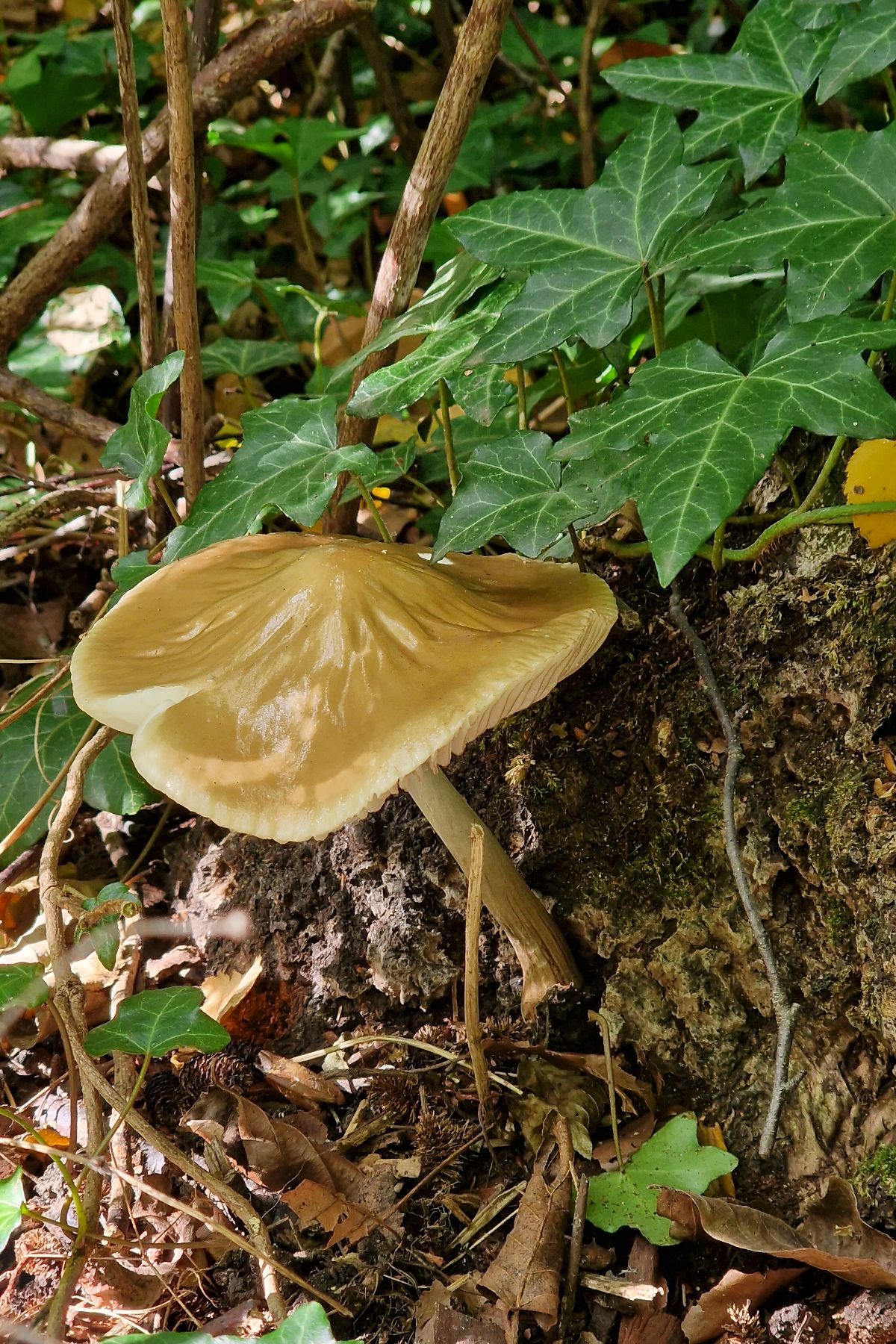
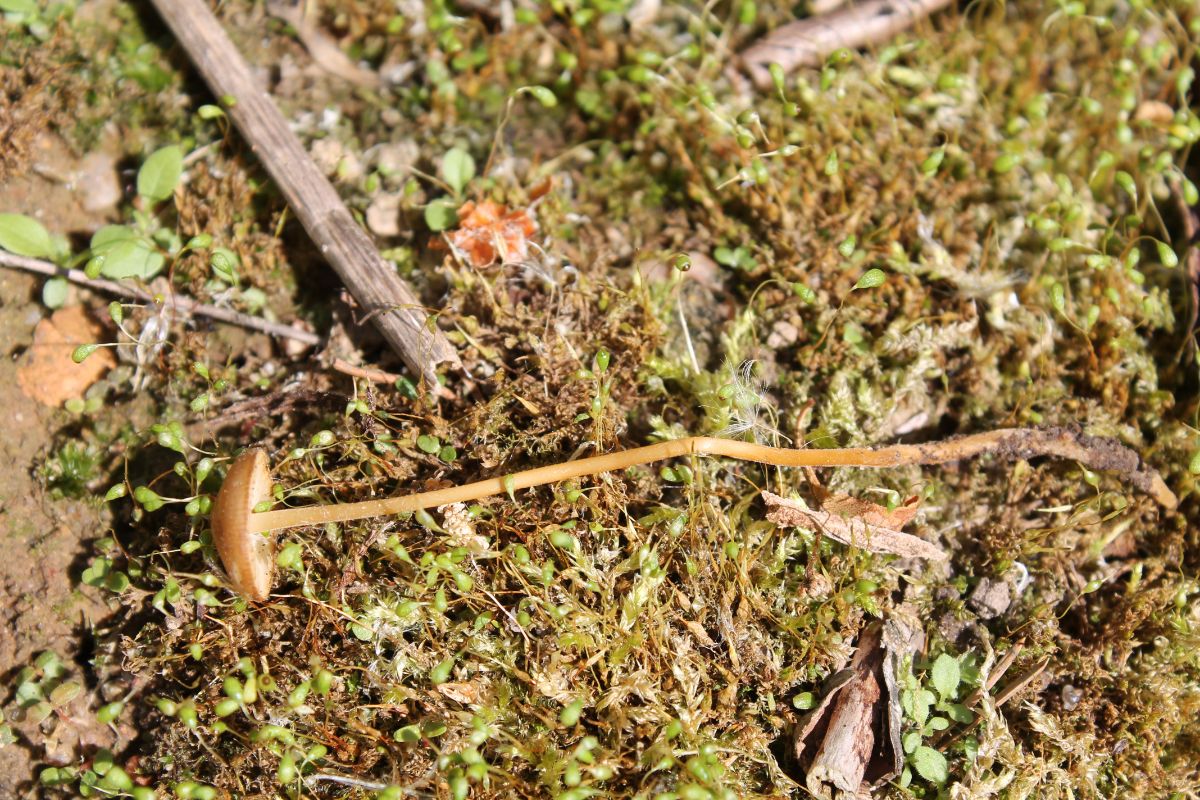
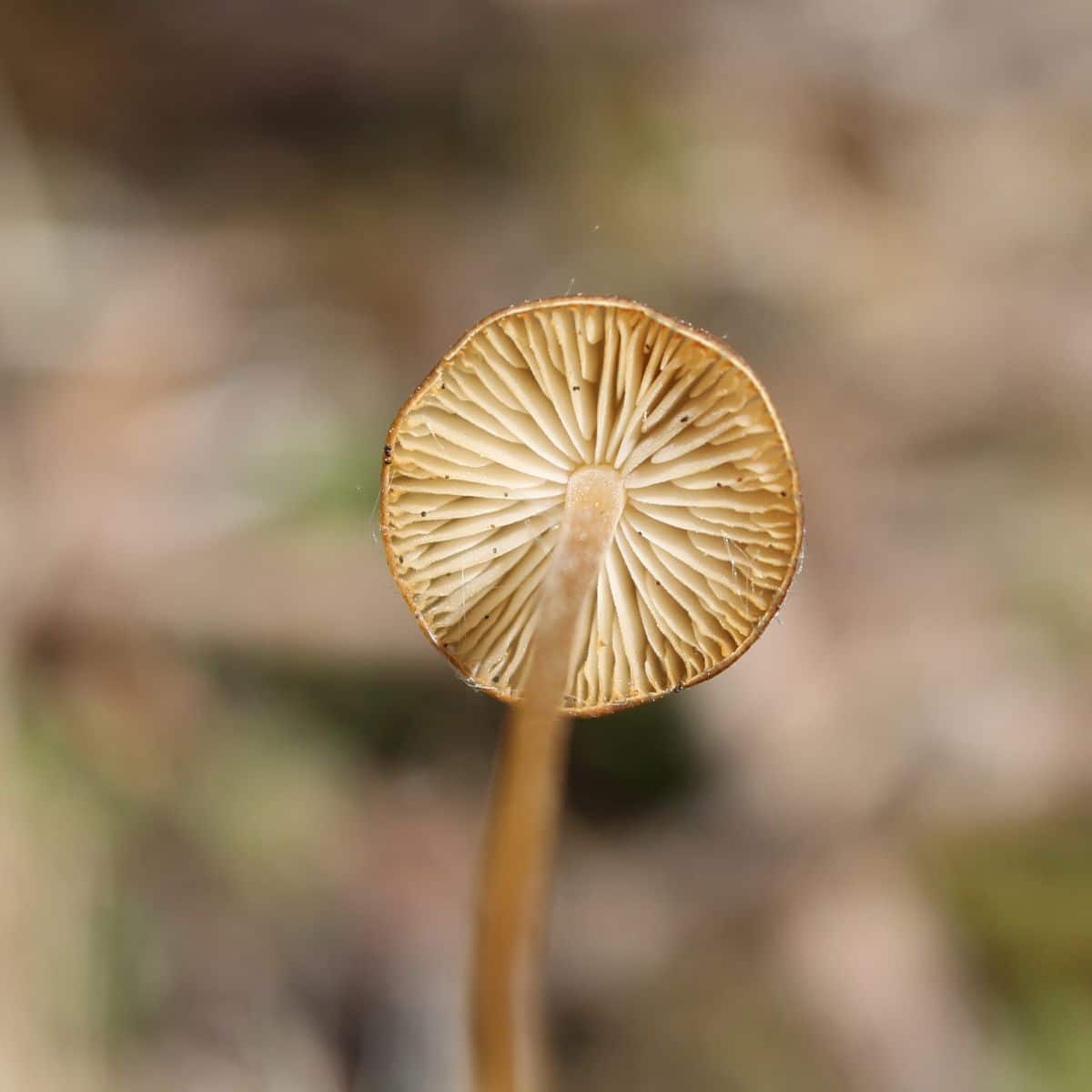
The Primary Rooting Hymenopellis of North America
- Hymenopellis incognita – Found on dead hardwoods, especially hickory. Distributed throughout eastern North America. Caps reach up to 4 inches wide. Stems grow up to 6.5 inches long above ground and up to 7 inches long below ground. The white gills are widely spaced.
- Hymenopellis furfuracea – Found near dead hardwoods, sometimes attached to the stump. Distributed across eastern North America. Their caps grow up to 4.75 inches wide . The stem grows up to 6.2 inches long aboveground and up to 4 inches long underground. The white gills are closely spaced. This species tends to be browner, stem and cap, than the other species. But, of course, this varies.
- Hymenopellis megalospora – Found on dead hardwoods. Distributed east of the Rocky Mtns. Hard to tell apart from H.incognita without a microscope. However, this species is significantly smaller. The caps reach up to 2 inches wide. The stems grow up to 6.25 inches long aboveground and are only about 1.5 inches long belowground.
- Hymenopellis sinapicolor – Found on dead hardwoods. Distribution still largely unknown as its a new species. Yellower cap, like mustard, but not always.
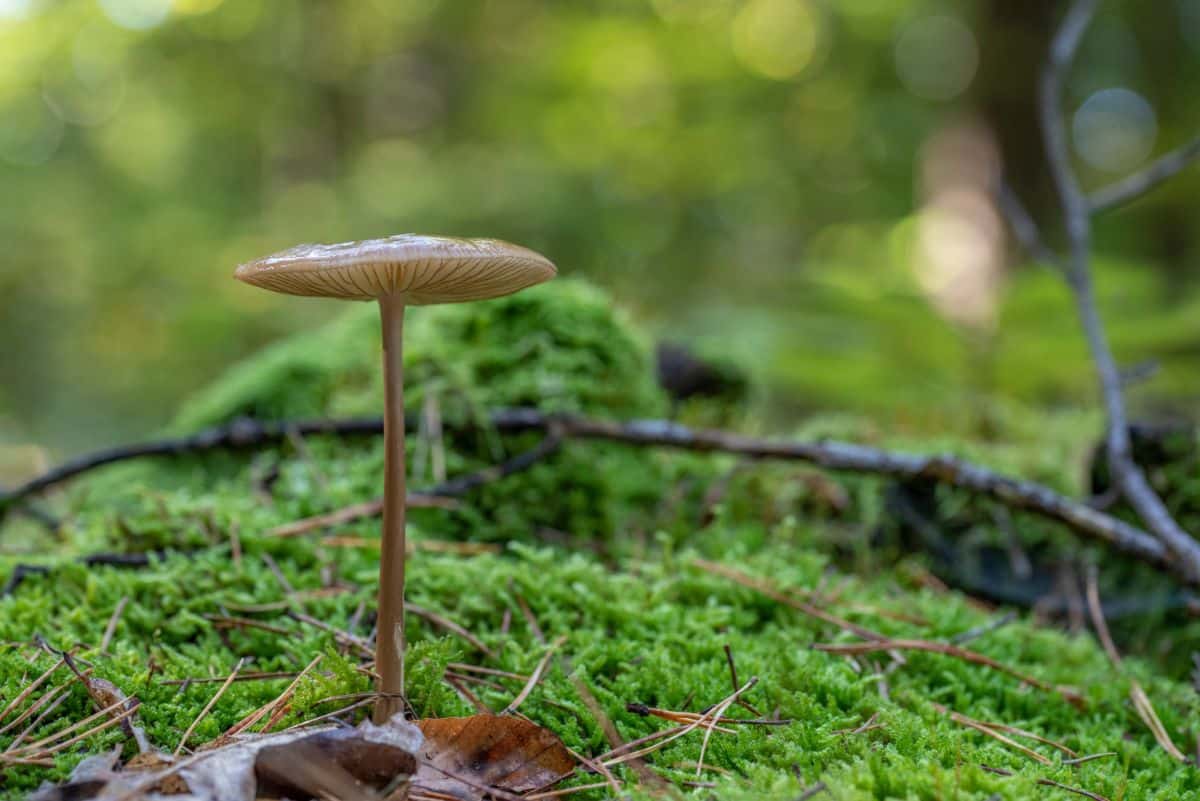
Rooting Mushroom Lookalikes
Paraxerula americana
This species looks similar but doesn’t overlap in distribution with the other Rooting mushrooms. This species grows in the Rocky Mtns, from Idaho down to New Mexico. It fruits on quaking aspen deadwood.
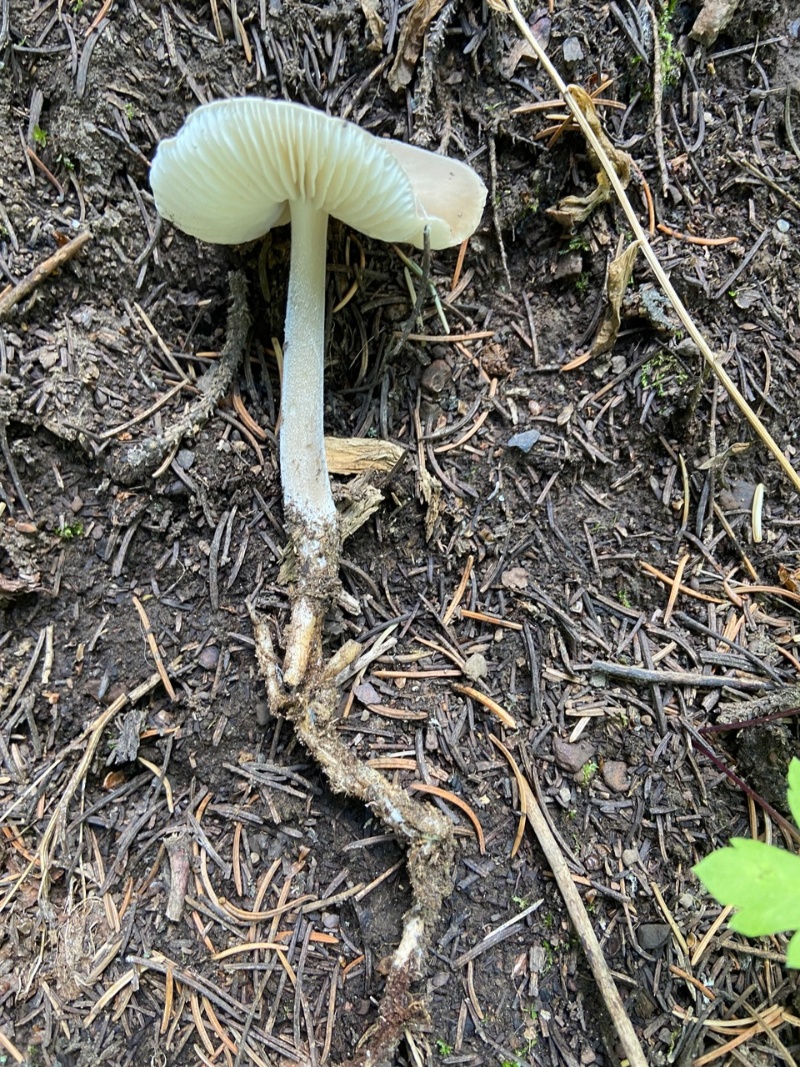
Caulorhiza umbonata
This is a California species of rooting mushroom that only fruits with redwoods.
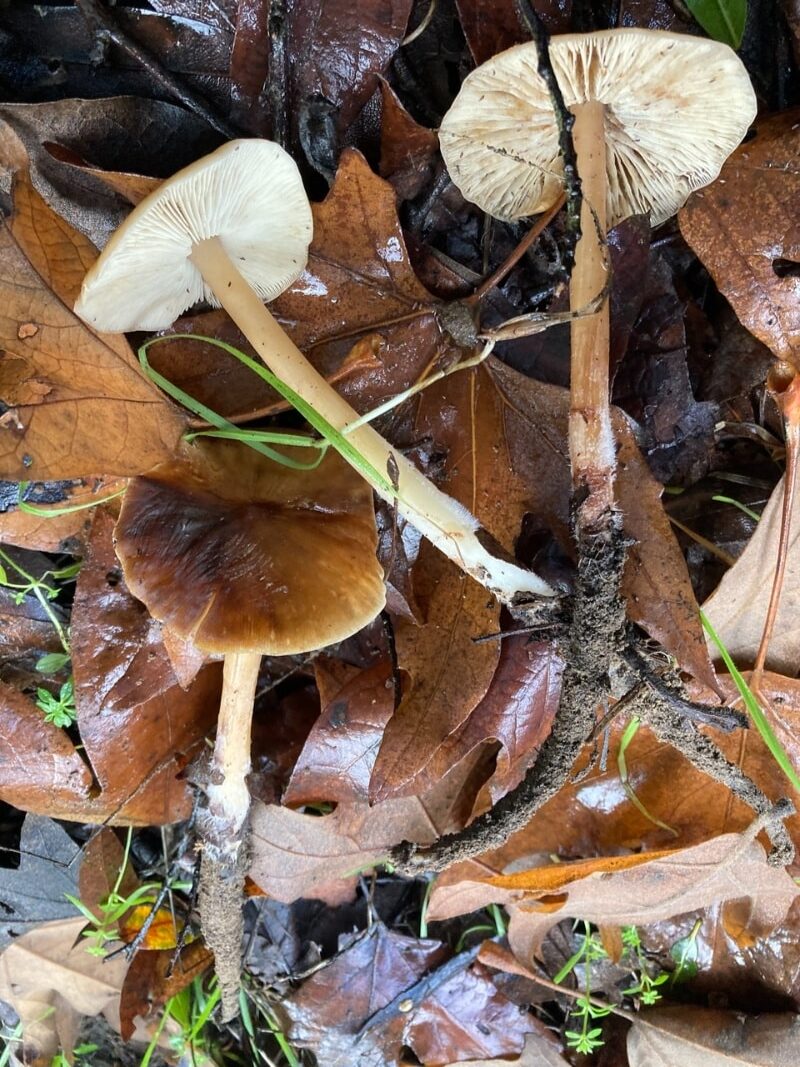
Rooting Mushrooms Edibility
Rooting mushrooms are edible but there’s not much to them flesh wise and their taste is indistinct. Most folks don’t bother with them; not worth the effort when there are so many more amazing species in the woods to eat.
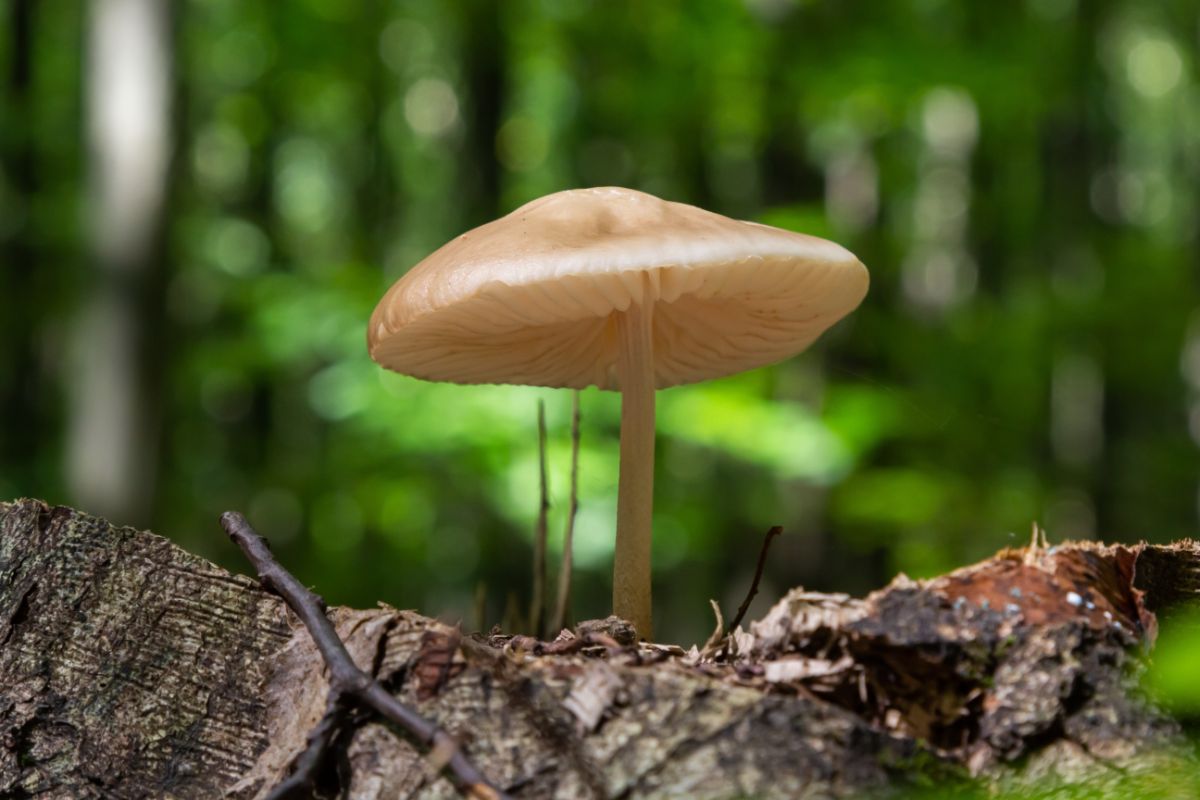
Common Questions About Rooting Mushrooms
Do rooting mushrooms have medicinal properties?
Currently, there’s no scientifically-backed information about the medicinal properties of the rooting mushrooms.

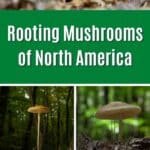
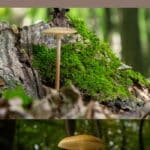



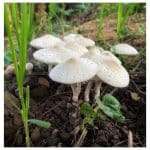
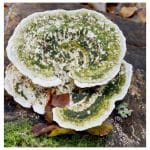
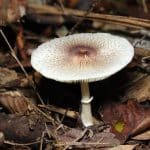
Leave a Reply